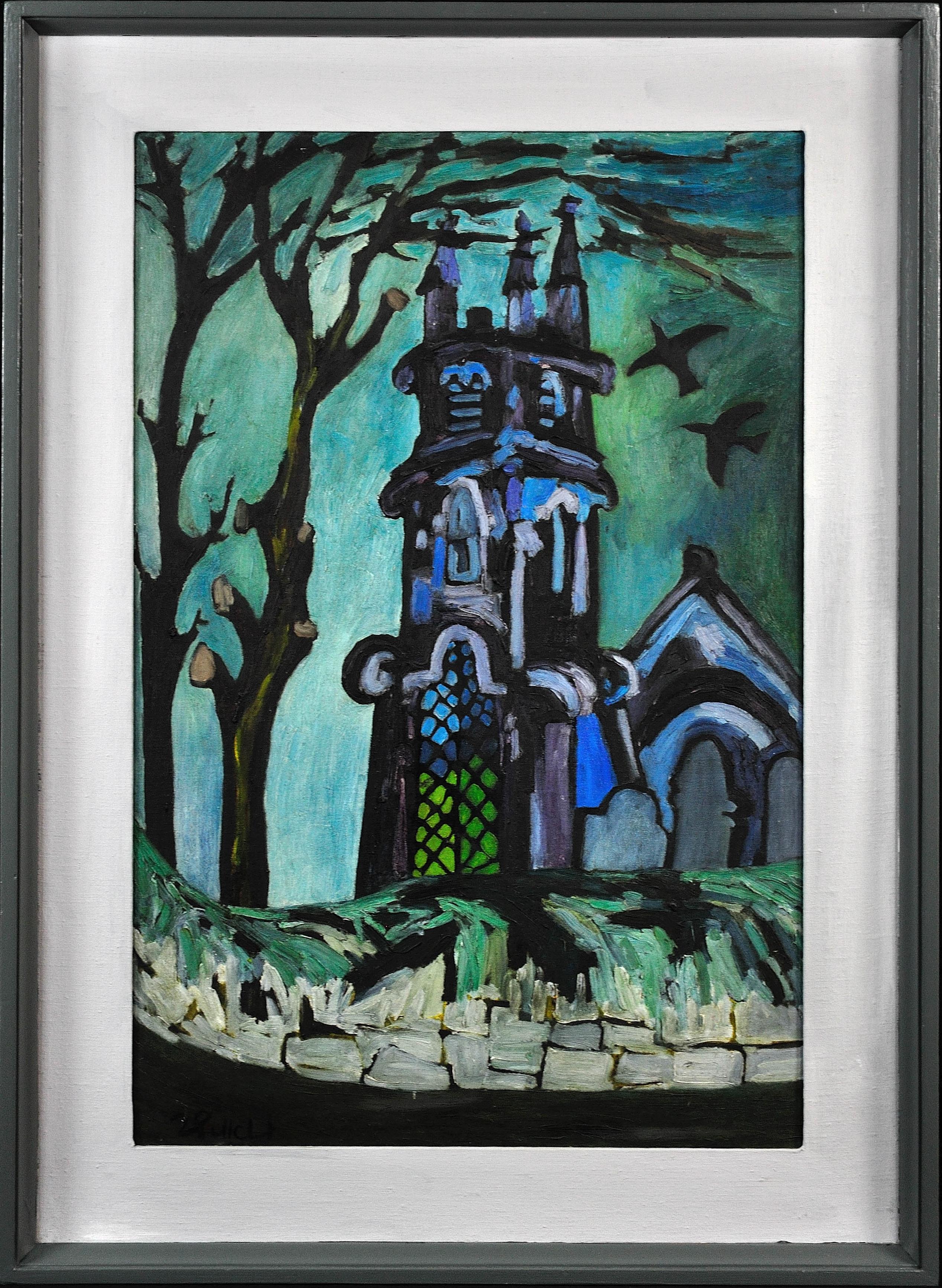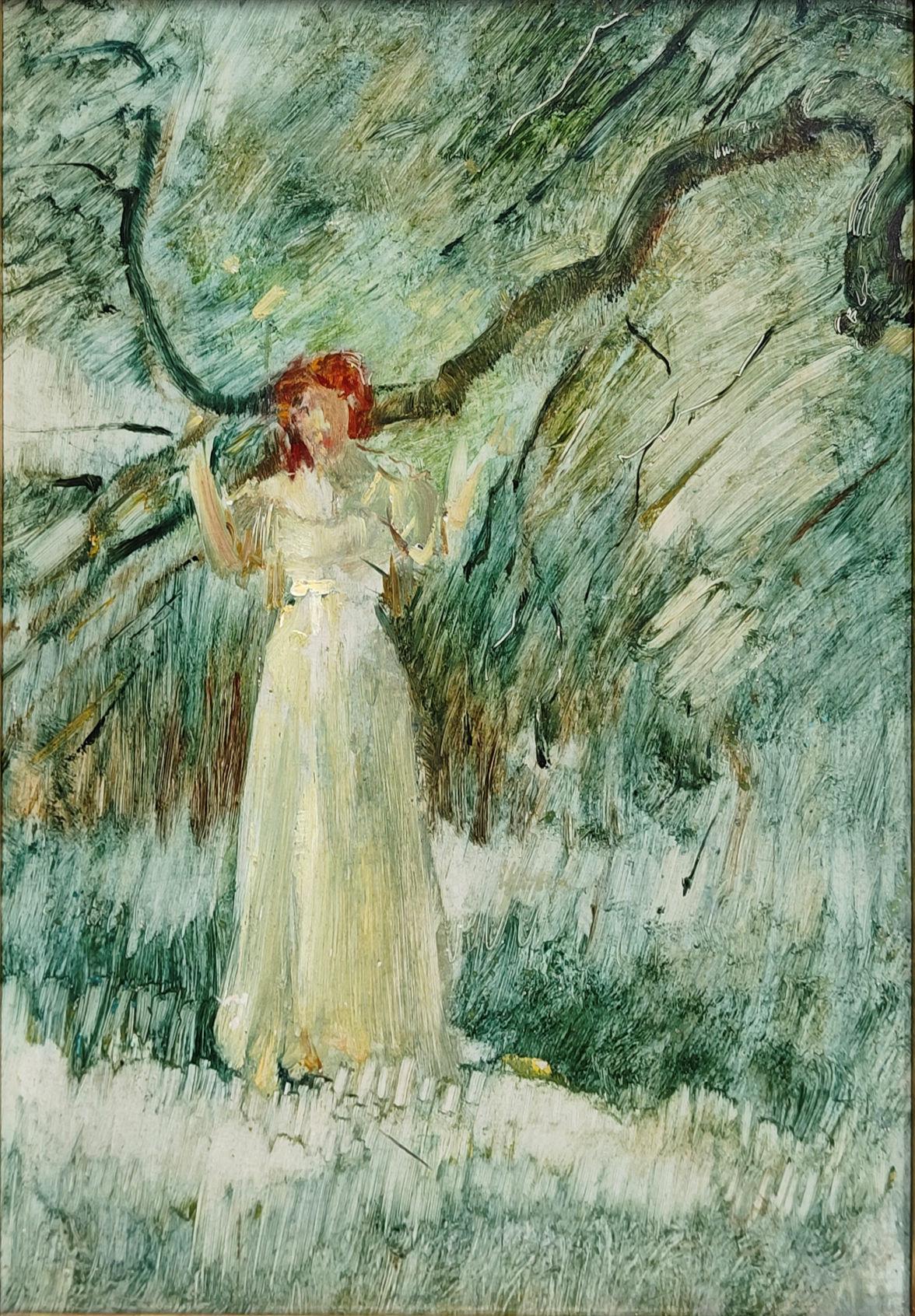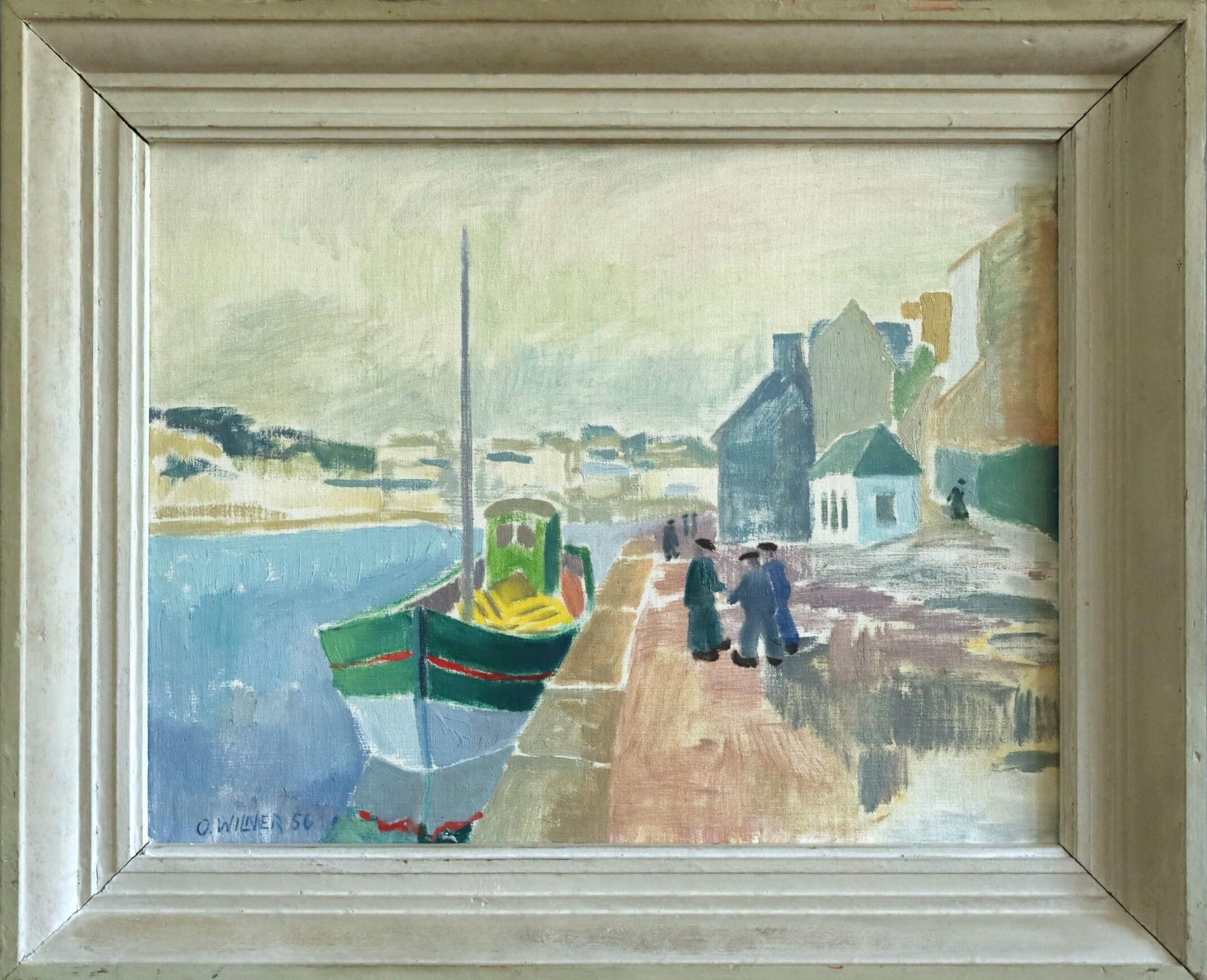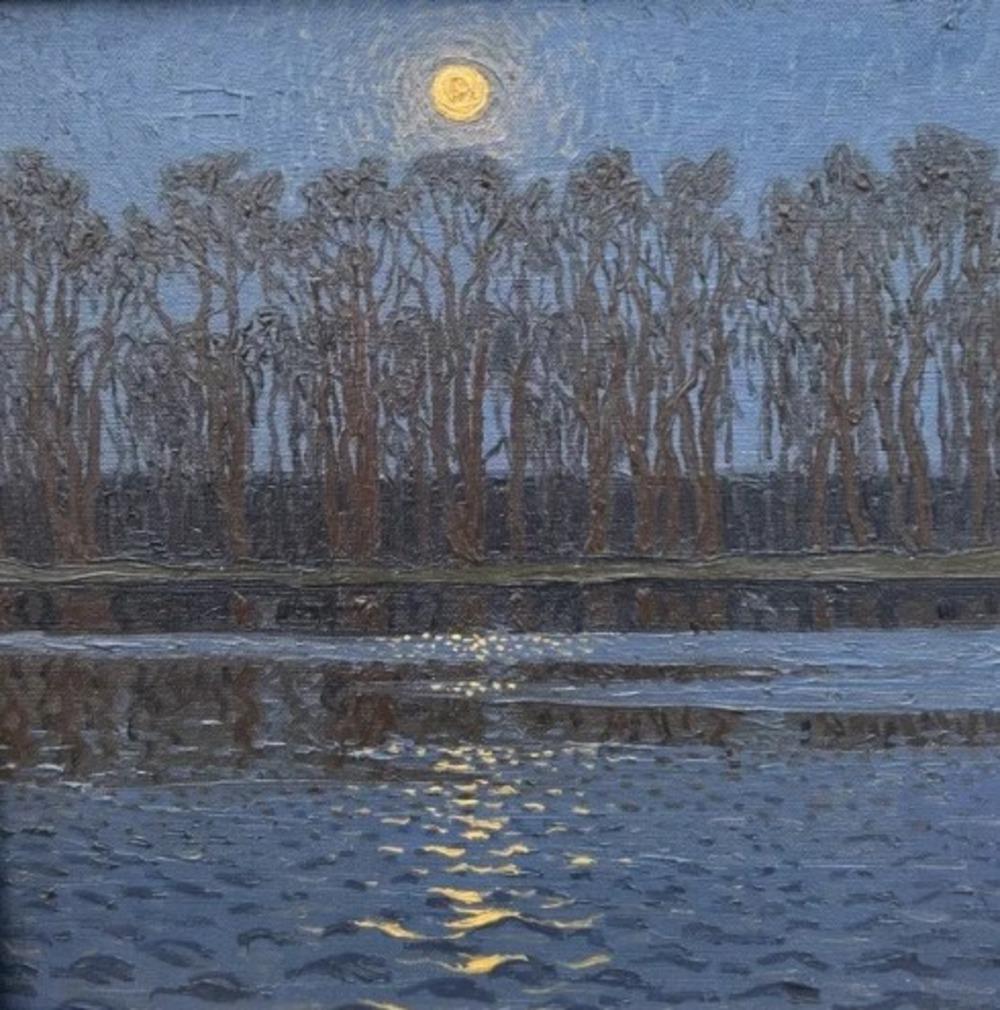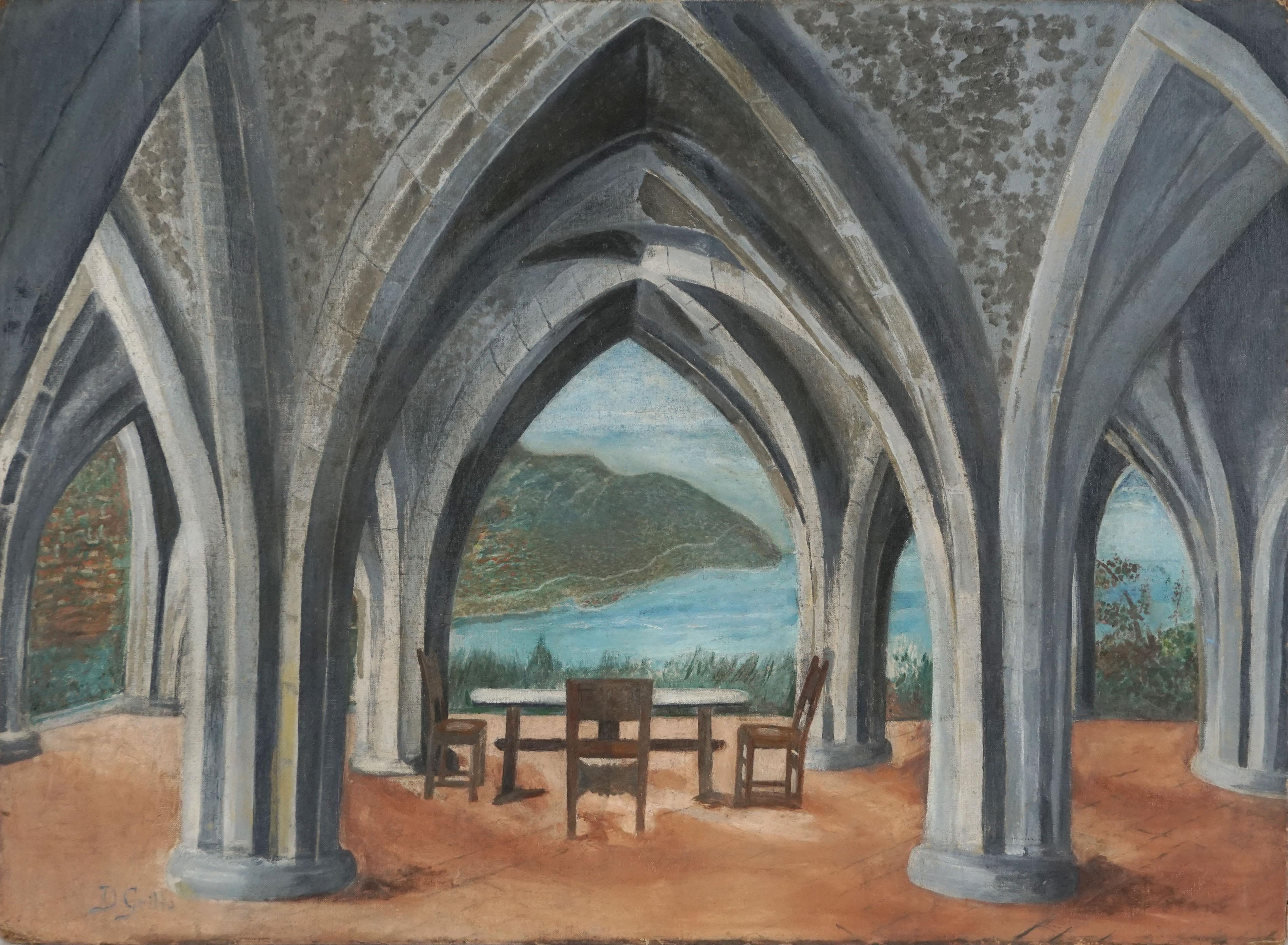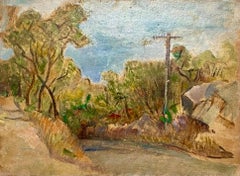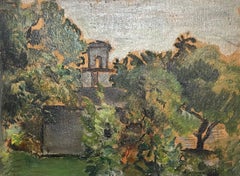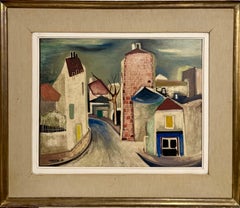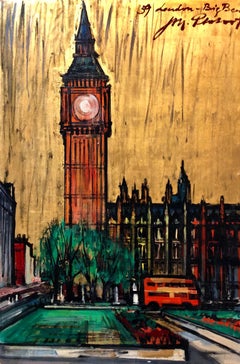
London, Big Ben Cityscape Mid Century Architectural Modernist Gold Leaf
View Similar Items
Want more images or videos?
Request additional images or videos from the seller
1 of 7
Josef Marc PlotastLondon, Big Ben Cityscape Mid Century Architectural Modernist Gold Leaf1959
1959
$1,400List Price
About the Item
About the Seller
4.9
Platinum Seller
Premium sellers with a 4.7+ rating and 24-hour response times
Established in 1995
1stDibs seller since 2014
1,782 sales on 1stDibs
Authenticity Guarantee
In the unlikely event there’s an issue with an item’s authenticity, contact us within 1 year for a full refund. DetailsMoney-Back Guarantee
If your item is not as described, is damaged in transit, or does not arrive, contact us within 7 days for a full refund. Details24-Hour Cancellation
You have a 24-hour grace period in which to reconsider your purchase, with no questions asked.Vetted Professional Sellers
Our world-class sellers must adhere to strict standards for service and quality, maintaining the integrity of our listings.Price-Match Guarantee
If you find that a seller listed the same item for a lower price elsewhere, we’ll match it.Trusted Global Delivery
Our best-in-class carrier network provides specialized shipping options worldwide, including custom delivery.More From This Seller
View AllSimka Simkhovitch WPA Artist Oil Painting Gouache American Modernist Powerline
By Simka Simkhovitch
Located in Surfside, FL
Simka Simkhovitch (Russian/American 1893 - 1949)
This came with a small grouping from the artist's family, some were hand signed some were not.
These were studies for larger paintings.
Simka Simkhovitch (Симха Файбусович Симхович) (aka Simka Faibusovich Simkhovich) (Novozybkov, Russia May 21, 1885 O.S./June 2, 1885 N.S.—Greenwich, Connecticut February 25, 1949) was a Ukrainian-Russian Jewish artist and immigrant to the United States. He painted theater scenery in his early career and then had several showings in galleries in New York City. Winning Works Progress Administration (WPA) commissions in the 1930s, he completed murals for the post offices in Jackson, Mississippi and Beaufort, North Carolina. His works are in the permanent collections of the Dallas Museum of Art, the National Museum of American Art and the Whitney Museum of American Art. Born outside Kyiv (Petrograd Ukraine) into a Jewish family who owned a small department store. During a severe case of measles when he was seven, Simcha Simchovitch sketched the views outside his window and decided to become an artist, over his father's objections. Beginning in 1905, he studied at the Grekov Odessa Art School and upon completion of his studies in 1911 received a recommendation to be admitted to the Imperial Academy of Arts. Though he enrolled to begin classes in architecture, painting, and sculpture at the Imperial Academy, he was dropped from the school roster in December because of the quota on the number of Jewish students and drafted into the army. Simchovitch served as a private in the 175th Infantry Regiment Baturyn [ru] until his demobilization in 1912. Re-enrolling in the Imperial Academy, he audited classes.
Simka Simkhovitch exhibited paintings and sculptures in 1918 as part of an exhibition of Jewish artists and in 1919 placed 1st in the competition "The Great Russian Revolution" with a painting called "Russian Revolution" which was hung in the State Museum of Revolution. In 1922, Simkha Simkhovitch exhibited at the International Book Fair in Florence (Italian: Fiera Internazionale del Libro di Firenze). In 1924, Simkhovitch came to the United States to make illustrations for Soviet textbooks and decided to immigrate instead. Initially he supported himself by doing commercial art and a few portrait commissions. In 1927, he was hired to paint a screen for a scene in the play "The Command to Love" by Fritz Gottwald and Rudolph Lothar which was playing at the Longacre Theatre on Broadway. Art dealers began clamoring for the screen and Simkhovitch began a career as a screen painter for the theater. Catching the attention of the screenwriter, Ernest Pascal, he worked as an illustrator for Pascal, who then introduced him to gallery owner, Marie Sterner. Simkhovitch's works appeared at the Marie Sterner Gallery beginning with a 1927 exhibit and were repeated the following year. Simkhovitch had an exhibit in 1929 at Sterner's on circus paintings. In 1931, he held a showing of works at the Helen Hackett Gallery, in New York City and later that same year he was one of the featured artists of a special exhibit in San Francisco at the California Palace of the Legion of Honor in Lincoln Park. The exhibit was coordinated by Marie Sterner and included four watercolors, including one titled "Nudes". He is of the generation of Russian Soviet artists such as Isaac Pailes, Serge Charchoune, Marc Chagall, Chana Orloff, Isaac Ilyich Levitan, and Ossip Zadkine.
In 1936, Simkhovitch was selected to complete the mural for the WPA Post office project in Jackson, Mississippi. The mural was hung in the post office and courthouse in 1938 depicted a plantation theme. Painted on the wall behind the judge’s bench, “Pursuits of Life in Mississippi”, a depiction of black workers engaged in manual labor amid scenes of white professionals and socialites, was eventually covered over in later years during renovations due to its stereotypical African American imagery. Simka painted what he thought was typical of Jackson. His impression of pre-civil rights Mississippi was evidently Greek Revival column houses, weeping willow trees, working class families, and the oppression of African Americans. He painted African American men picking cotton, while a white man took account of the harvest and a white judge advised a white family, calling it Pursuits of Life in Mississippi.
Though clearly endorsed by the government and initially generally well-received, the mural soon raised concerns with locals as the climate toward racial segregation began to change. The main concern was whether depictions that show African Americans in subjugated societal roles should be featured in a courtroom. The following year, his painting "Holiday" won praise at an exhibition in Lincoln, Nebraska. In 1940, Simkhovitch's second WPA post office project was completed when four murals, "The Cape Lookout Lighthouse and the Orville W. Mail Boat", "The Wreck of the Crissie Wright", "Sand Ponies" and "Canada Geese" were installed in Beaufort, North Carolina. The works were commissioned in 1938 and did not generate the controversy that the Jackson mural had. The main mural is "The Wreck of the Crissie Wright" and depicts a shipwreck which had occurred in Beaufort in 1866. "The Cape Lookout Lighthouse and the Orville W. Mail Boat" depicted the lighthouse built in 1859 and the mail boat that was running mail during the time which Simkhovitch was there. The boat ran mail for the area until 1957. "Sand Ponies" shows the wild horses common to the North Carolina barrier islands and "Canada Geese" showed the importance of hunting and fishing in the area. All four murals were restored in the 1990s by Elisabeth Speight, daughter of two other WPA muralists, Francis Speight...
Category
1930s American Modern Landscape Paintings
Materials
Oil, Board, Gouache
Simka Simkhovitch WPA Artist Oil Painting American Modernist Landscape Pond Tree
By Simka Simkhovitch
Located in Surfside, FL
Simka Simkhovitch (Russian/American 1893 - 1949)
This came with a small grouping from the artist's family, some were hand signed some were not.
Thes...
Category
1930s American Modern Landscape Paintings
Materials
Oil, Board
Simka Simkhovitch WPA Artist Oil Painting American Modernist Landscape w Tower
By Simka Simkhovitch
Located in Surfside, FL
Simka Simkhovitch (Russian/American 1893 - 1949)
This came with a small grouping from the artist's family, some were hand signed some were not.
Thes...
Category
1930s American Modern Landscape Paintings
Materials
Oil, Board
Charles Chartier 1951 French Cubist Modernist Oil Painting Surreal Paris Village
Located in Surfside, FL
Alex Charles Chartier, French, 1894-1957
Oil painting on board
1951
Quartier Plaisance, Paris village scene
Hand signed and dated '51 lower left.
Dimensions: 21" x 25-3/4", frame...
Category
Mid-20th Century Modern Landscape Paintings
Materials
Oil, Board
1972 Gestural Oil Painting Boat in Harbor Figural Abstraction Raoul Middleman
By Raoul Middleman
Located in Surfside, FL
Raoul Middleman (born 1935 in Baltimore, Maryland) is an American painter. Middleman has been a member of the Maryland Institute College of Art faculty since 1961. American University Museum at the Katzen Center has described Middleman as a "Baltimore maestro [whose] nudes are not pretty—they are sagging, dimpled, and real. His cityscapes reveal the underbelly of post-industrial rot, his narrative paintings give contemporary life to his personal obsessions. They are intelligent, messy, and utterly masterful."
From an interview with RM "I was doing abstract art. Then Roy Lichtenstein came around, and I wanted to be current. I remember Grace Hartigan said, “You’ve gotta go to New York, seize destiny by the hand.” My friend Jon Schueler took my slides up to Eleanor Ward, who had the Stable Gallery. My Pop art paintings were discovered. I moved to New York into Malcolm Morley’s old loft down on South Street. Agnes Martin was upstairs... People who interest me come from different quarters. I knew guys around Schueler, like B.H. Friedman. But I also knew the Pop world pretty well – Al Hansen, Richard Artschwager, Lichtenstein. I became friends with Raoul Hague...
Category
1970s American Modern Landscape Paintings
Materials
Oil, Board
Outside the Synagogue Russian Judaica Oil Painting
By Emmanuel Snitkovsky
Located in Surfside, FL
This piece came from the collection of the Bezalel Art Gallery on the Lower East Side of New York City.
Emmanuil Snitkovsky is an internationally known artist, sculpture and poet.
Emmanuil Snitkovsky was born into a family of artists and scholars from the Odessa Art College in Russia. Immersed in the traditions of Russia art, he approaches form, line, space and color with relentless vision and impeccable technique.
Two highly successful artists, the husband and wife team of Emmanuil and Janet Snitkovsky have exhibited a selection of eight large Judaic paintings at the Chabad Chassidic Art Institute (Chai Gallery) in Crown Heights. Three of those paintings are truly singular visions of Jewish Art that cause us to stop and reassess our preconceptions about the meaning and importance of their subjects. Emmanuil and Janet Snitkovsky were both born in the Ukraine in the 1930′s. Emmanuil was trained in Odessa in public monument art, and Janet majored in fashion at the Lvov Decorative Art Institute. After both narrowly survived the devastation of the Second World War in Stalin’s Russia, they began to collaborate on state sponsored art works in 1962. For ten years, they worked on grandiose public sculptural projects to commemorate the fallen Russian heroes of the Second World War in Moscow, Kiev, Tula and Kazan. They were
exemplary Soviet Realists working for the Soviet regime. Eventually, this career became untenable for them, both as artists and as Jews, when they clashed with Soviet officialdom over a commission to commemorate the Babi-Yar massacre. The Soviets refused to acknowledge this massacre of 100,000 Jews and eventually suppressed the memorial. In 1978, Emmanuil and Janet arrived in New York and began to recreate their artistic lives. In the ensuing 25 years, they have been quite successful, exhibiting widely in the United States and Europe. They have nurtured a hybrid style of painting and sculpture called “Renaissance Revival” combining contemporary and classical subjects in a stylized realism that evokes both the American regionalist Thomas Hart
Benton and the Italian Renaissance master Sandro Botticelli. The works are highly proficient, polished, and commercial productions in a quirky decorative style. They have continued to accept sculptural projects that have not shied away from kitschy realistic sculptures of Charlie Chaplin as “The Kid,” The Little Tramp” and Buster Keaton as “Cameramen.” In some ways, they have appropriated American culture just as they once accepted Soviet culture.
Janet, a graduate of the Lvov College, was invited- by virtue of the high honors she
achieved there- to matriculate at the Lvov University of Art. Such an opportunity is extremely rare for anyone, particularly for someone of Jewish descent. Their works of art are included in collections of the Japanese Imperial Family...
Category
1980s Modern Landscape Paintings
Materials
Canvas, Oil, Illustration Board
You May Also Like
The Harbor At St Michaels Mount In Cornwall Framed Cornish Coastal Oil Painting
Located in Sutton Poyntz, Dorset
Ken Symonds.
English ( b.1927 - d.2010 ).
The Harbor, St Michaels Mount, Cornwall, 1982.
Oil On Artist’s Board.
Signed Lower Right.
Image size 15.4 inches x 19.5 inches ( 39cm x 49...
Category
Late 20th Century Modern Landscape Paintings
Materials
Oil, Board
Church And Churchyard Landscape Oil Painting Mid-20th Century Cornish Artist
By Joan Gillchrest
Located in Sutton Poyntz, Dorset
Joan Gillchrest.
English ( b.1918 - d.2008 ).
Church And Churchyard.
Oil On Board. Signed.
Image size 33.9 inches x 21.8 inches ( 86cm x 55.5cm ).
Frame size 42.3 inches x 30.3 inch...
Category
Mid-20th Century Modern Landscape Paintings
Materials
Oil, Board
Llangynidr Bridge Over The River Usk In Winter Powys Crickhowell Wales Painting
Located in Sutton Poyntz, Dorset
Anthony Morris.
English ( b.1938 ).
Llangynidr Bridge Over The River Usk In Winter. Wales.
Oil On Artist's Board.
Signed Lower Right.
Image size 6.7 inches x 8.7 inches ( 17cm x 22...
Category
Late 20th Century Modern Landscape Paintings
Materials
Oil, Board
Cornish Fishing Boats At First Light Mid-20th Century Cornwall Original Painting
By Joan Gillchrest
Located in Sutton Poyntz, Dorset
Joan Gillchrest.
English ( b.1918 - d.2008 ).
Cornish Fishing Boats At First Light.
Oil On Paper Mounted On Board.
Signed Monogram Lower Right.
Image size 26.2 inches x 22 inches ( 66.5cm x 56cm ).
Frame size 35.8 inches x 31.3 inches ( 91cm x 79.5cm ).
Available for sale; this original oil painting is by the Cornish artist Joan Gillchrest and dates from around the late 1980s.
The oil painting is presented and supplied in a sympathetic new replacement frame (which is shown in these photographs) that suits the artwork’s color palette and behind non-reflective Tru Vue UltraVue® UV70 glass.
This painting is in excellent condition and presents superbly. It wants for nothing and is ready to hang and display.
The painting is signed with her monogram lower right.
Joan Gillchrest is one of Mousehole’s and Cornwall’s most recognised and celebrated artists. Her vibrant art sits firmly alongside other great artists of the St. Ives School from the 1960s.
She was born Joan Scott in London in 1918 into a wealthy and illustrious family. She was the third of four children. Her father was a pioneer of radiology – and a skilful caricaturist - and her Australian mother was an accomplished pianist. Sir George Gilbert Scott was her great grandfather, who designed the imposing Midland Grand Hotel at St. Pancras as well as countless parish churches. Grandfather, George Gilbert Scott Jnr, is remembered for three Cambridge colleges, Christ’s, Pembroke and Peterhouse. Her uncle Giles, (Giles Gilbert Scott) to whom Joan was close, is best known for his magnificent Anglican Liverpool Cathedral, Battersea Power Station and the iconic and ubiquitous red telephone box. Coming from such a long line of eminent architects it is not surprising that Joan always loved architecture and the churches and chapels of the Penwith peninsula feature prominently in her work. She said that buildings were “in her blood”.
Her early childhood was spent at the family home in Buckinghamshire, but she was a difficult child – the family hired one nanny for her and one for the other three children- and at one point she was sent to Upper Chine School in the Isle of Wright to give her family some peace! She was however the apple of her father’s eye and he encouraged her obvious artistic talent.
In 1934, aged only 15 but encouraged by her parents, she went to Paris to study art and learn the language. There she met Gwen John and studied in various studios, sometimes working as a model.
In 1936 she enrolled at the Grosvenor School of Art and subsequently studied there under Iain McNab, whom she described as a marvelous teacher. Her early artistic career was very promising; she first exhibited at the Royal Academy when she was just 18 and showed works at the New England Art Club in 1937 and the London Group in 1938.
When the Second World War broke out Joan was 21. She took a crash course in nursing and first aid and volunteered as an ambulance driver for Westminster Hospital. She later drove a mobile rescue unit. She was not able to paint much during the war but kept in touch with McNab; when the area around St Paul’s was blitzed, leaving the cathedral relatively unscathed, McNab got Joan and a few others to paint the scene. Her work, created with a thick paint and a palette knife, hung in the art school for many years.
Joan’s painting career stalled in the 1940s. In 1942 she married a barrister and Coldstream Guards officer Samuel Gillchrest, and they soon had a son, then a daughter. With a young family, she had little time to paint, and had to hide the work she did produce as her husband thought that work as an artist was beneath them. Sadly, the marriage broke down and in 1953 they divorced. In leaving a difficult marriage at this time, she forfeited money, security and her previous place in society.
Despite the huge changes in her life, her overwhelming desire to paint remained constant. She ignored the disapproval of her friends and family and started to explore new ways of expressing herself on canvas. She moved to a studio in Chelsea, an area much favored by the artistic community. To support herself, her children and her painting she also found regular work as an artist’s model. She was tall, strikingly good looking and combined elegance with bohemianism. She also carried an air of mystery from her rich and privileged past, and so she became sought after as a fashion model.
In the flat below hers lived an artist who had enjoyed some professional acclaim, Adrian Ryan...
Category
Mid-20th Century Modern Landscape Paintings
Materials
Paper, Oil, Board
"Into the Woods" Henry Prellwitz, Lyrical Woman In Wooded Landscape Painting
By Henry Prellwitz
Located in New York, NY
Henry Prellwitz
Into the Woods
Oil on board
11 1/2 x 8 3/4 inches
Henry Prellwitz studied art at the Art Students League of New York, where his chief mentor was Thomas Wilmer Dewing; he later became its director.[3] He also studied at the Académie Julian in Paris.
In 1892, he set up his studio in the Holbein Studios building on West 55th Street in Manhattan, where his future wife, the artist Edith Mitchill, also had a studio. They married in 1894 and had a son, Edwin.
By the mid 1890s, he was teaching portrait painting at the Pratt Institute, where one of his students was the Cubist artist Max Weber.
In 1899, Henry and Edith moved to the north shore of Peconic Bay on Long Island, where their artist friends Irving Ramsay Wiles and Edward August Bell were already established. They painted plein air paintings and also worked in adjoining studios at High House, their Peconic Bay home.
Prellwitz painted Impressionist and Tonalist waterscapes of Peconic Bay and allegorical figure paintings such as the 1904 Lotus and Laurel. He exhibited mainly on the east coast and at expositions like the St. Louis World's Fair, where he won a silver medal. He won the Third Hallgarten Prize from the National Academy of Design (NAD) in 1893 for The Prodigal Son, and his Venus won the Thomas B. Clarke Prize at the 1907 NAD exhibition for the best figure composition by an American citizen painted in the United States.
Both Prellwitzes disappeared into obscurity for several decades after their deaths in the early 1940s. Rediscovered in the 1980s, they have been called one of the best-kept secrets in art...
Category
Early 20th Century Modern Figurative Paintings
Materials
Oil, Board
$3,600 Sale Price
20% Off
1956 Mid Century Modern Swedish Expressive Oil Painting - Quayside Conversation
Located in Bristol, GB
QUAYSIDE CONVERSATION
Size: 54 x 65 cm (including frame)
Oil on board
A charming and serene mid-century modernist harbour scene by a coastal town, executed in oil onto board and dat...
Category
Mid-20th Century Modern Landscape Paintings
Materials
Oil, Board
Recently Viewed
View AllMore Ways To Browse
Painting London Big Ben
C Babcock
Cattle Watering Oil Painting
Don Juan
J Owens
Michael Taylor Artist
Oil Derek
Painting Of Tahiti
Paintings By Burnett
Salmon Oil Painting
Apple Blossoms Paintings
Christian Dior 1995
English Coastal Watercolor
Frame X Ritz
Jack Riley
Monhegan Island
Morton Brown
Oil Painting Grand Canyon
